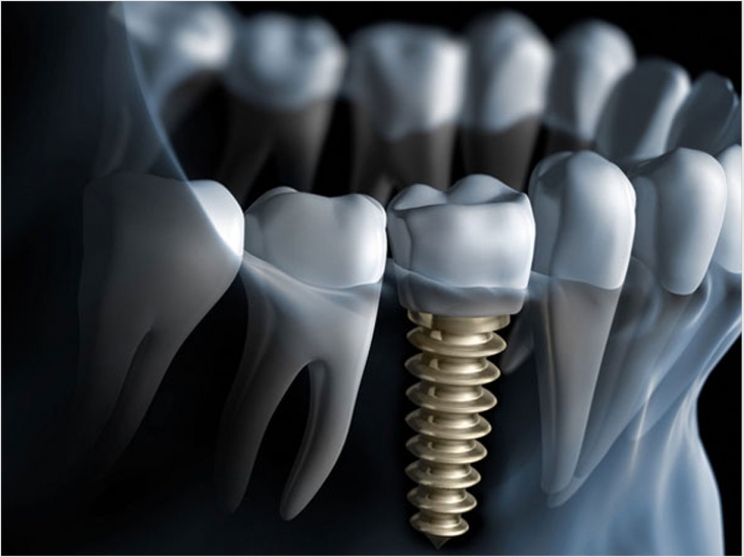
Researchers at the University of Nottingham’s Schools of Pharmacy and Life Sciences have discovered how the topography and chemical composition of dental and other implants can be adapted to control the immune response to them and reduce the risk of rejection.
Artificial joints, stents, and dental implants are among the most common devices that use biomaterials to restore function or completely replace diseased or damage tissues. But following implantation, a host reaction is common, including inflammation, a foreign body reaction, or fibrous capsule development, which can result in implant failure.
These reactions are driven by the activation of immune cells called monocytes and macrophages attaching to the implant surface. The physical features on the surface of a material or implant, or topography, are known to influence macrophage attachment.
“We are looking at ways to create materials that can be safely put inside the body without the immune system attacking it and causing rejection. To do this, we are exploring materials that can control the immune response,” said research co-leader Amir Ghaemmaghami, MD, PhD, professor of immunology and immuno-bioengineering.
“We have used high-throughput screening technology to examine how the topography and chemical properties of a material can be used to design immune-instructive surfaces for potential use in implants, which influence macrophage function and consequently the foreign body responses to biomaterials,” said Ghaemmaghami.
The researchers said they used a state-of-the-art high-throughput screening approach to investigate the relationship between material topographies and immune cell attachment and behaviors for 2,176 different micropatterns.
The results indicated that micron-scale pillars from 5 to 10 µm in diameter were key in driving macrophage attachment and that the density of the micropillars proved key in controlling inflammatory reactions.
Also, the researchers discovered immune instructive polymer chemistries that successfully controlled the immune response in a pre-clinical rodent model through screening libraries of diverse polymers and identifying materials that control macrophage behavior.
An artificial intelligence algorithm was used to model the relationships between the material chemistries and the cell responses they produced. These results suggest that different immune-instructive polymers attract different amounts of protein adsorption, which was key to the macrophage responses.
“These latest discoveries add to a wealth of materials research taking place at the University of Nottingham, and it is exciting to have discovered these biomaterials that could be a real game-changer in the area of medical implants,” said Morgan Alexander, PhD, professor of biomedical surfaces at the School of Pharmacy.
“Getting these materials used in a commercial product would be our ultimate aim for this research. There is still a way to go to get there, but these discoveries are a significant step towards that,” said Alexander.
The research was conducted in collaboration with Technical University Eindhoven, La Trobe University Australia, and Maastricht University. It was funded by an EPSRC Programme Grant in Next Generation Biomaterials Discovery.
The first study, “Immune Modulation by Design: Using Topography to Control Human Monocyte Attachment and Macrophage Differentiation,” was published by Advanced Science. The second study, “Immune-Instructive Polymers Control Macrophage Phenotype and Modulate the Foreign Response In Vivo,” was published by Matter.
Related Articles
Biomaterial Fuels Bone Healing With Less Rejection
Simulated Efferocytosis May Promote Bone Regeneration
Bone Graft Material Provides Nicer Smiles and Less Pain











